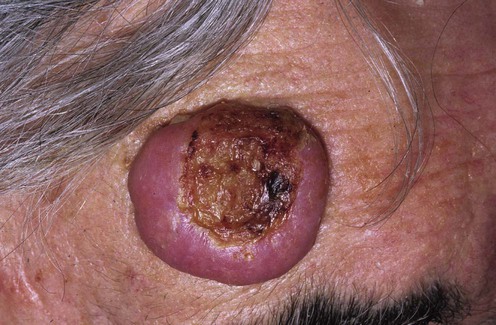A KA classically has three clinical stages:
Keratoacanthoma

Management strategy
 Proliferative – early rapid growth to form a crateriform nodule
Proliferative – early rapid growth to form a crateriform nodule
 Involutional – the lesion regresses, usually within 4 to 8 months.
Involutional – the lesion regresses, usually within 4 to 8 months.
 Epithelial lip (in favor of KA)
Epithelial lip (in favor of KA)
 Sharp outline between tumor and stroma (in favor of KA)
Sharp outline between tumor and stroma (in favor of KA)
 Numerous mitoses (in favor of SCC)
Numerous mitoses (in favor of SCC)





 Curettage
Curettage Excision
Excision Observation
Observation


